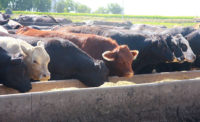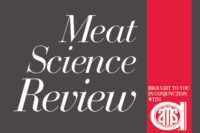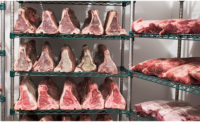Increasing consumer interest in forage-fed/finished beef in the United States has led to several research investigations pertaining to the effect of forage quality on carcass characteristics, meat quality and sensorial acceptance.
In the southern United States, Bermudagrass is one of the most common warm-season grasses used to graze cattle because of its large biomass production and forage quality. This introduced grass provides few benefits to wildlife when compared with native warm-season grasses (NWSG), such as Indiangrass and Bluestem. NWSG are drought tolerant and provide superior wildlife habitat, but meat quality from cattle that graze on native forages is not well documented.
The present manuscript describes the results of one of the two such studies conducted at Mississippi State University and authored by AMSA members Dr. Wes Schilling, Dr. Poulson Joseph and Dr. Byron Williams. The objective of the first study was a comparative evaluation of the carcass quality and meat quality attributes of cattle that were fed NWSG (Indiangrass monoculture, IND; and mixed forages of Indiangrass, Big Bluestem and Little Bluestem, MIX) vs. Bermudagrass (BER) during the stocker phase and finished on grain.
Researchers randomly assigned 72 steers to nine pasture plots with three different forage treatments, which included IND, MIX and BER, during the stocker phase. The animals were finished at the feedlot and harvested to determine carcass characteristics. Beef quality was determined by evaluating loin steaks from each treatment for color, pH, instrumental tenderness, lipid oxidation, cooking loss, consumer acceptability and descriptive sensory characteristics. Differences in chemical composition between loin steaks were determined through proximate composition and fatty acid profile analyses.
The percentage of choice carcasses from each treatment was 100 percent, 95.8 percent and 87 percent for MIX, BER, and IND, respectively. No differences existed between treatments with respect to quality and yield grade as well as pH, cooking loss and shear force. Steaks from the BER treatment had greater fat content than steaks from IND and MIX treatments. All treatments exhibited similar color stability for steaks under simulated retail display, with redness decreasing as storage time increased. Lipid oxidation was influenced by the feeding regimen with steaks from NWSG treatments showing less susceptibility to lipid oxidation over six days of retail display in comparison to steaks from the BER treatment.
Consumers (n=180) rated the beef steaks between like slightly and like moderately on a nine-point hedonic scale, and no differences existed among treatments with respect to appearance, aroma, flavor, texture and overall acceptability. Consumers were grouped into clusters based on preference and liking of steaks which revealed mixed results on their preference. Descriptive sensory analysis of steaks also indicated that there were no sensory differences between treatments during retail display storage at each storage time that was evaluated.
The outcome of the study indicates that native warm season grasses can be incorporated in the stocker phase of cattle when finished on grain without compromising the quality of beef. In addition, feeding mixed native warm season grasses yielded similar quality grades and meat with lesser susceptibility to lipid oxidation and lower total fat percentage compared to cattle that were fed Bermudagrass. NP




Report Abusive Comment